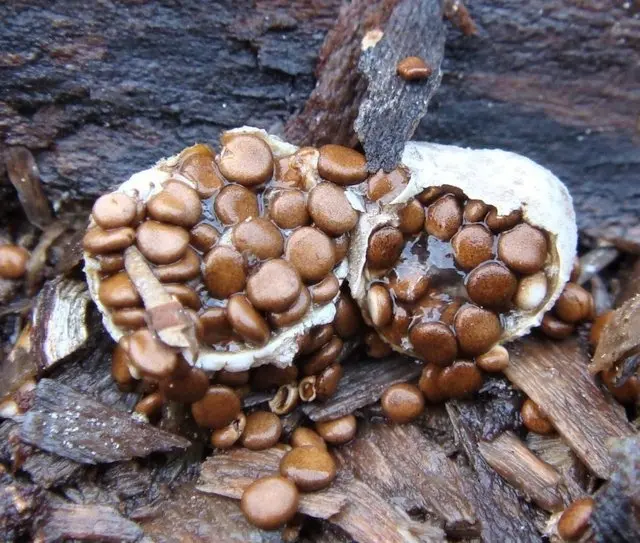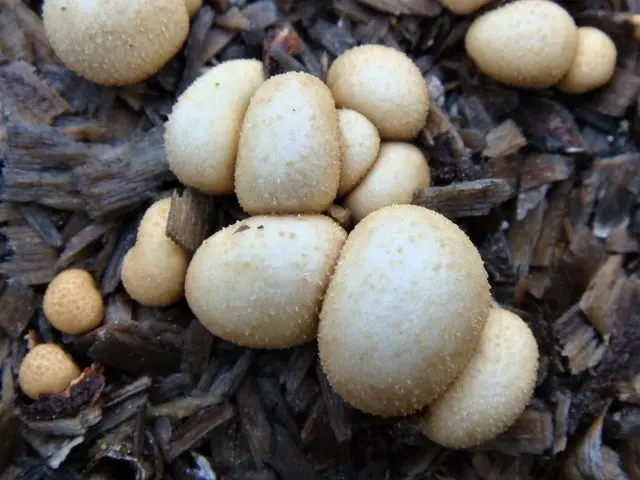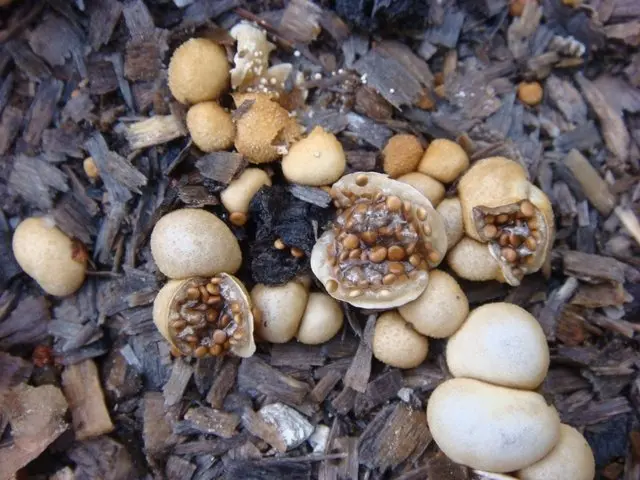Shapeless nest (Nidularia deformis)
- Division: Basidiomycota (Basidiomycetes)
- Subdivision: Agaricomycotina (Agaricomycetes)
- Class: Agaricomycetes (Agaricomycetes)
- Subclass: Agaricomycetidae (Agaricomycetes)
- Order: Agaricales (Agaric or Lamellar)
- Family: Agaricaceae (Champignon)
- Genus: Nidularia (Nesting)
- Type: Nidularia deformis (Shapeless nest)
:
- Cyathus is ugly
- Cyathus globosa
- Cyathodes deformed
- Granularia pisiformis
- Confluent nesting
- Nidularia australis
- Nidularia microspora
- Nidularia farcta

The shapeless nest usually grows in large clusters. Its fruiting bodies resemble miniature raincoats. They are no more than 1 cm in diameter; sessile, initially smooth, with age their surface becomes rough, as if “frosty”; whitish, beige or brownish. Single specimens are round or pear-shaped, growing in close groups are somewhat flattened laterally.

Peridium (outer shell) consists of a thin dense wall and a looser, “felt” layer adjacent to it. Inside it, in a brownish mucous matrix, there are lenticular peridioles with a diameter of 1-2 mm. They are located freely, not attached to the wall of the peridium. At first they are light, as they mature, they become yellowish brown.

Spores from mature fruiting bodies are spread during rain. From the impact of raindrops, the thin fragile peridium is torn, and the peridioles scatter in different directions.

Subsequently, the shell of the peridiolus is destroyed, and spores are released from them. Spores are smooth, hyaline, ellipsoid, 6–9 x 5–6 µm.

The shapeless nest is a saprophyte; it grows on rotting wood of deciduous and coniferous species. She is satisfied with dead trunks and branches, wood chips and sawdust, old boards, as well as coniferous litter. It can be found in lumberyards. The period of active growth is from July to late autumn, in mild climates it can be found even in December.
There is no edibility data.
:
The first meeting with this mushroom was so memorable! What is this marvelous miracle, marvelous marvel? The scene of action is a coniferous-mixed forest and a site near a forest road, where a pile of logs lay for some time. Then the logs were taken away, leaving some wood chips, bark, and in some places quite a bit of sawdust. It is on this bark and sawdust that it grows, such a light one, somewhat slightly reminiscent of likogala – if we ignore the color – or micro-raincoats – and then the surface is torn, and something is slimy inside, and the filling is like that of goblets. At the same time, the glass itself – a hard, clear-cut form – is absent. The design is opened, as it turns out.









